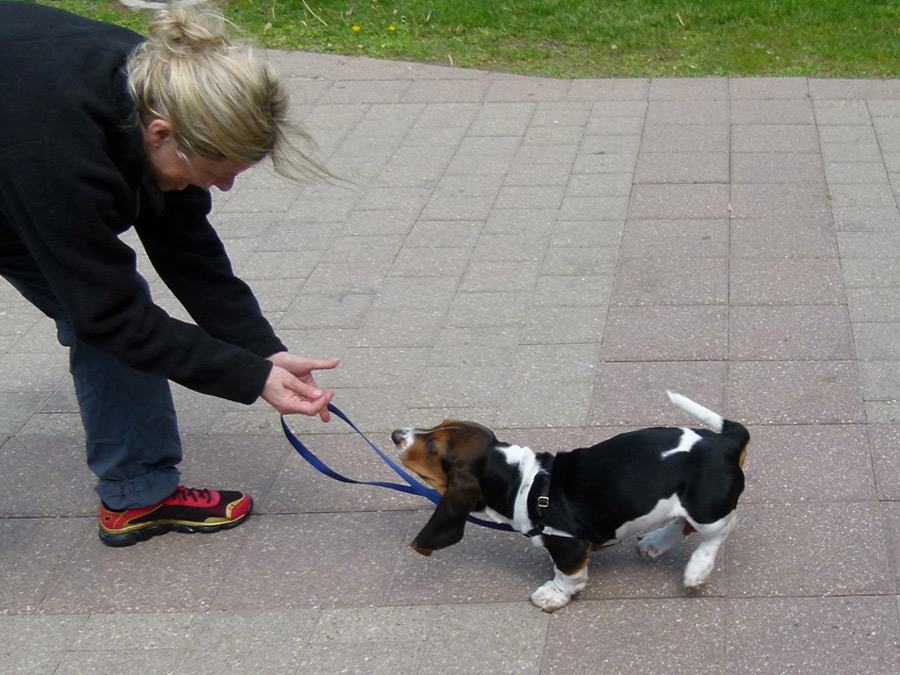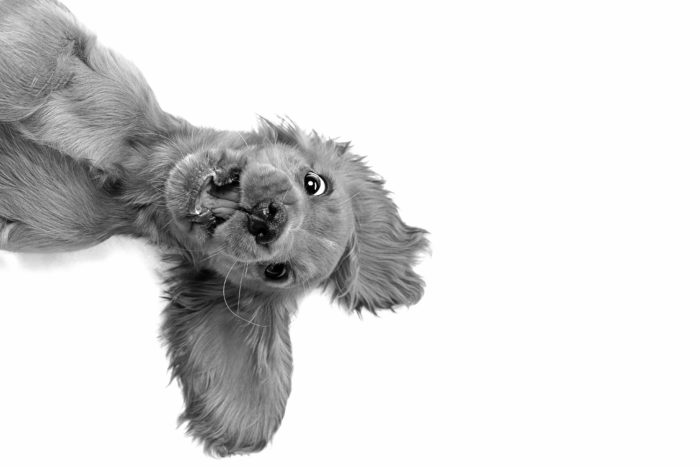It is important to stop often and give that pup a tasty treat. This is how the dog will learn to check in with you. Even if things seem to be going great, you must remember to stop. A good rule of thumb, in the beginning, is to walk two or three steps. It will feel weird at first like, “oh my, I am not getting anywhere” but this is what has to happen in order for the exercise to be effective. Walk, stop, walk, stop. Think timing and feedback. You will start to see the results as little by little the puppy starts to offer you glances on a regular basis.
In competition, the dog heels on the left. This is taught as a matter of tradition. It is up to you which side your pup walks on. Unless you are planning to show your dog, it really doesn’t matter.

Nothing takes the place of taking the time to teach your puppy to walk nicely on a loose leash, but for those occasions when you just have to get where you’re going in a hurry, this piece of equipment can be a lifesaver. A no-pull harness is a gentle and effective tool designed to help curb your puppy from pulling on the leash.
- It is not desirable to be pulled down the street by your dog. At the very least, this feels unpleasant. Worse, injuries can easily happen.
- A dog that is out of control and unpleasant to take for a walk very often ends up not going out at all. This will most certainly be the foundation for some serious problems. It will cause problems in the house, problems in the yard, and potentially, problems with other dogs or people.
If your puppy is a real eager beaver, bouncing off the walls and hyper, to begin with, your intonation should be calm and quiet to help keep the pup focused. With a shy and timid pup, you may want to ham it up a bit to get the puppy relaxed and into the exercises and or games.

